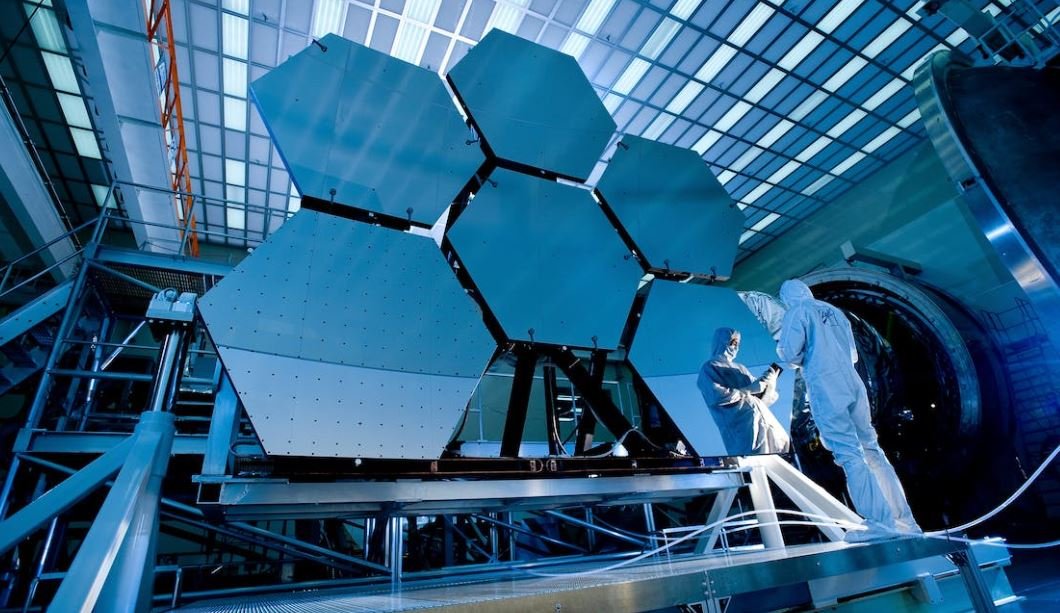Production of Sperm
Sperm production, also known as spermatogenesis, is a complex biological process that occurs in the testicles of males. It is the process by which immature sperm cells, or spermatogonia, develop and mature into functional spermatozoa capable of fertilizing an egg. This article will delve into the various stages of sperm production, factors that can affect sperm production, and the importance of maintaining healthy sperm for fertility.
Key Takeaways:
- Sperm production is a complex process that occurs in the testicles of males.
- It involves the maturation and development of spermatogonia into functional spermatozoa.
- Factors such as diet, lifestyle, and exposure to certain substances can affect sperm production.
- Maintaining healthy sperm is essential for male fertility.
The process of spermatogenesis is divided into several distinct stages:
- Spermatogonia proliferation: This is the initial stage where spermatogonia, the precursor cells of sperm, undergo rapid division.
- Meiosis I: In this stage, primary spermatocytes are formed and undergo the first round of cell division, resulting in the formation of secondary spermatocytes.
- Meiosis II: Secondary spermatocytes then undergo the second round of cell division, resulting in the formation of spermatids.
- Spermiogenesis: Spermatids undergo a series of morphological changes to form mature spermatozoa, including the development of a head, midpiece, and tail.
- Sperm maturation: Once formed, spermatozoa enter the epididymis, where they mature and acquire the ability to swim and fertilize an egg.
During spermiogenesis, spermatids undergo significant morphological changes to acquire the unique structure of mature spermatozoa.
Factors Affecting Sperm Production:
Various factors can influence sperm production, including:
- Hormonal Balance: Hormones play a vital role in regulating the production of sperm. Disruptions in hormonal balance can impact spermatogenesis.
- Nutrition: A nutrient-rich diet, including vitamins and minerals, is essential for sperm production. Deficiencies in certain nutrients can impair sperm development.
- Lifestyle Choices: Habits such as smoking, excessive alcohol consumption, and drug use can negatively affect sperm production and quality.
- Environmental Factors: Exposure to toxins, radiation, and certain chemicals in the environment can disrupt spermatogenesis.
- Temperature: The testicles require a slightly lower temperature than the rest of the body for optimal sperm production. Excessive heat exposure, such as from hot baths or saunas, can adversely affect sperm production.
Environmental factors, such as exposure to toxins, can have a detrimental impact on sperm production.
Importance of Healthy Sperm:
Healthy sperm is crucial for male fertility and successful reproduction. Factors that affect sperm quality can also impact fertility. Low sperm count, poor sperm motility, and abnormal sperm morphology are common causes of male infertility.
| Parameter | Healthy Range |
|---|---|
| Sperm Count | 15 million or more per milliliter |
| Sperm Motility | 40% or more of sperm should have progressive motility |
| Sperm Morphology | 4% or more of sperm should have normal morphology |
Monitoring parameters such as sperm count, motility, and morphology can help assess fertility potential.
Ensuring the production of healthy sperm involves adopting a healthy lifestyle, practicing safe sex to prevent sexually transmitted infections, managing stress levels, and avoiding exposure to harmful substances. Regular exercise, maintaining a healthy weight, and getting enough sleep can also contribute to better sperm production.
If you or your partner are experiencing difficulties in conceiving, it is important to consult a healthcare professional who can conduct tests to assess sperm quality and provide appropriate advice and treatment, if necessary.
Conclusion:
The production of sperm, or spermatogenesis, is a vital process for reproductive health in males. Understanding the stages of sperm production, factors that can affect it, and the importance of healthy sperm is crucial for maintaining fertility and overall well-being. By adopting a healthy lifestyle and seeking professional guidance when needed, individuals can optimize their chances of successful reproduction.

Common Misconceptions
1. Sperm Production is Constant
One common misconception about the production of sperm is that it occurs at a steady and continuous rate. However, this is not the case as sperm production is influenced by various factors such as age, health, and hormonal levels.
- Sperm production can be affected by certain medical conditions and medications.
- As men age, the rate of sperm production tends to decline.
- Sperm production can also be affected by stress and lifestyle factors such as smoking and excessive alcohol consumption.
2. Only One Testicle is Responsible for Sperm Production
Another misconception is that only one testicle is responsible for sperm production. However, both testicles contribute to the production of sperm. Each testicle functions independently and produces sperms, which then travel through a system of ducts to be stored and matured.
- If one testicle becomes damaged or is removed, the remaining testicle can still produce enough sperm for fertility.
- Sperm production can continue even if one testicle is not functioning optimally.
- Despite this, it’s important for overall reproductive health to have two functional testicles.
3. Quantity is an Indicator of Fertility
Many people believe that a higher quantity of sperm equates to better fertility, but this is not entirely true. While a higher number of sperm can increase the chances of fertilization, there are other factors that determine male fertility as well.
- Quality of sperm, including the morphology (shape) and motility (ability to swim), plays a crucial role in fertility.
- Having a higher concentration of healthy and properly functioning sperm is more important than simply having a large quantity.
- Other factors such as the presence of anti-sperm antibodies or obstructions in the reproductive system can affect fertility, regardless of the sperm count.
4. Semen and Sperm are the Same
A commonly mistaken concept is that semen and sperm are synonymous. However, semen and sperm are not the same thing. Sperm is the microscopic reproductive cell produced in the testicles, while semen is the fluid that carries the sperm during ejaculation.
- Semen is composed of various components, including sperm, seminal fluid, and prostatic fluid.
- Sperm makes up only a small percentage of the overall volume of semen.
- Understanding the difference between semen and sperm is important when discussing fertility and reproductive health.
5. Production of Sperm Continues Throughout a Man’s Life
One misconception is that the production of sperm continues throughout a man’s entire life. In reality, sperm production starts during puberty and typically declines as a man ages. The rate at which sperm are produced gradually decreases over time.
- After the age of 35, the decline in sperm production becomes more significant.
- However, it is important to note that men can continue producing sperm and fathering a child well into their later years.
- Factors such as overall health, lifestyle choices, and genetic factors can influence the rate of decline in sperm production.

The Importance of Testosterone Levels in Sperm Production
Testosterone is essential for the production of healthy sperm in males. This table provides a comparison between average testosterone levels and sperm count among different age groups.
| Age Group | Average Testosterone Level (ng/dL) | Average Sperm Count (million/mL) |
|---|---|---|
| 18-25 | 550-1000 | 30-150 |
| 26-35 | 500-900 | 25-120 |
| 36-45 | 400-750 | 20-100 |
Sperm Health and Lifestyle Factors
Various lifestyle choices and factors can impact sperm health. This table presents the association between specific lifestyle factors and sperm quality.
| Lifestyle Factor | Impact on Sperm Quality |
|---|---|
| Smoking | Reduced sperm count and motility |
| Alcohol Consumption | Lowered testosterone levels and increased abnormal sperm |
| Poor Diet | Decreased sperm count and quality |
Sperm Development Process
The production of sperm involves a complex process known as spermatogenesis. This table outlines the different stages of sperm development.
| Stage | Description |
|---|---|
| Spermatogonia | Undifferentiated cells that divide and produce primary spermatocytes |
| Primary Spermatocytes | Undergo meiosis I to produce secondary spermatocytes |
| Secondary Spermatocytes | Undergo meiosis II to produce spermatids |
| Spermatids | Undergo maturation and differentiation into spermatozoa |
Sperm Motility and Fertilization Potential
The ability of sperm to swim (motility) and fertilize an egg is crucial for successful reproduction. This table presents the percentages of motile sperm and fertilization rates in different conditions.
| Condition | Motile Sperm Percentage | Fertilization Rate |
|---|---|---|
| Normal | 40-60% | 60-80% |
| Hypospermia (low semen volume) | 15-30% | 40-60% |
| Oligoasthenoteratozoospermia (low sperm count, motility, and abnormal morphology) | 5-20% | 30-50% |
The Impact of Age on Sperm DNA Integrity
The integrity of sperm DNA can affect fertility and offspring health. This table highlights the relationship between age and levels of DNA fragmentation in sperm.
| Age Group | Average DNA Fragmentation (%) |
|---|---|
| 20-30 | 15-20% |
| 31-40 | 20-30% |
| 41-50 | 30-40% |
Sperm Count and Male Infertility
Low sperm count is a common cause of male infertility. This table provides data on the prevalence of male infertility based on sperm count.
| Sperm Count (million/mL) | Prevalence of Male Infertility |
|---|---|
| Less than 15 | 40-50% |
| 15-40 | 20-30% |
| More than 40 | 10-15% |
The Role of Sperm Maturation in the Epididymis
The epididymis plays a crucial role in sperm maturation and storage. This table summarizes the different stages of sperm maturation within the epididymis.
| Epididymal Region | Sperm Maturation Stage |
|---|---|
| Initial Segment | Immature |
| Caput | Maturing |
| Corpus | Mature |
| Cauda | Fully mature and capable of fertilization |
The Impact of Environmental Factors on Sperm Health
Environmental factors can affect sperm health and fertility. This table identifies some common environmental factors and their impact.
| Environmental Factor | Effect on Sperm Health |
|---|---|
| Pesticides and Herbicides | Decreased sperm count and motility |
| Heat Exposure | Reduced sperm production |
| Pollution | Increased DNA damage in sperm |
Sperm Preservation Techniques
Sperm preservation techniques enable long-term storage and future use. This table presents different methods and their success rates.
| Preservation Method | Success Rate (%) |
|---|---|
| Cryopreservation (Freezing) | 50-80% |
| Donor Sperm Banking | Dependent on quality and population demand |
| Testicular Sperm Extraction | Varies depending on the underlying cause of infertility |
The production of sperm is a complex process influenced by various factors, including hormones, lifestyle choices, and environmental conditions. Testosterone levels significantly impact sperm production and quality. Factors such as smoking, alcohol consumption, and poor diet can negatively affect sperm health. Understanding the stages of sperm development and the importance of sperm motility and DNA integrity provides valuable insights into male fertility. Age, sperm count, and environmental factors also contribute to fertility outcomes. By employing sperm preservation techniques, individuals can enhance their reproductive options. Overall, promoting optimal sperm health is essential for fertility and future generations.
Frequently Asked Questions
What is the process of sperm production called?
The process of sperm production is called spermatogenesis. It involves several stages of cell division and differentiation within the seminiferous tubules of the testes.
What are the primary cells involved in spermatogenesis?
Spermatogenesis primarily involves two types of cells called Sertoli cells and spermatogonia. Sertoli cells provide physical and nutritional support to developing sperm cells, while spermatogonia are the cells that eventually give rise to mature sperm.
How long does it take for sperm to mature?
The maturation process of sperm takes approximately 72 days from the initial production of spermatogonia to the release of mature sperm into the seminiferous tubules.
What are the main hormones involved in sperm production?
Testosterone, follicle-stimulating hormone (FSH), and luteinizing hormone (LH) are the main hormones involved in sperm production. Testosterone is produced by the testes and plays a crucial role in regulating spermatogenesis, while FSH and LH are produced by the pituitary gland and help stimulate the testes to produce sperm.
What factors can affect sperm production?
Various factors can affect sperm production, including age, genetic factors, hormonal imbalances, certain medical conditions (such as testicular cancer), exposure to toxins or radiation, excessive heat, and certain medications or lifestyle choices (such as smoking or excessive alcohol consumption).
What is the average sperm count for a healthy male?
The average sperm count for a healthy male ranges from 15 million to 200 million sperm cells per milliliter of semen. Counts below 15 million per milliliter may indicate infertility.
How does the body regulate sperm production?
The body regulates sperm production through a negative feedback system. When sperm levels are low, the hypothalamus releases gonadotropin-releasing hormone (GnRH), which stimulates the pituitary gland to release FSH and LH. These hormones then act on the testes to stimulate sperm production. Once sperm levels are adequate, the negative feedback inhibits the release of GnRH, FSH, and LH, thus pausing sperm production.
Are all sperm cells produced viable?
No, not all sperm cells produced are viable. During spermatogenesis, many immature or abnormal sperm cells are eliminated through apoptosis (programmed cell death). This process helps ensure that only healthy and functional sperm reach maturity.
Can sperm production be enhanced or optimized?
There are several ways to potentially enhance or optimize sperm production, including maintaining a healthy lifestyle (regular exercise, balanced diet, adequate sleep), avoiding excessive heat exposure (such as saunas or hot tubs), reducing stress levels, avoiding smoking and excessive alcohol consumption, and managing any underlying medical conditions or hormonal imbalances that may affect sperm production.
Can sperm production be restored after a vasectomy?
While a vasectomy is considered a permanent form of contraception, it is possible to restore sperm production through a surgical procedure called vasectomy reversal. However, the success of the reversal procedure varies and depends on several factors, including the length of time since the vasectomy, the presence of scar tissue, and individual fertility factors.




